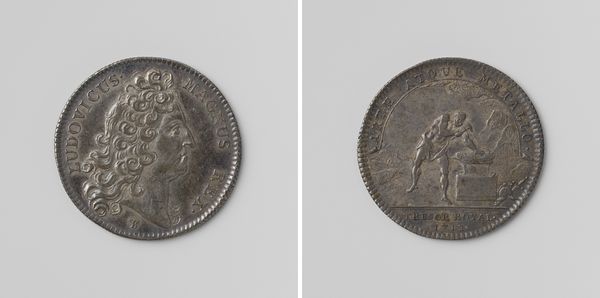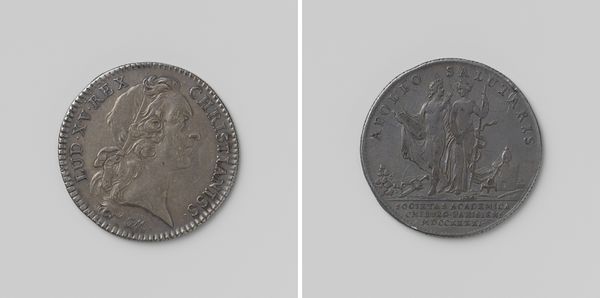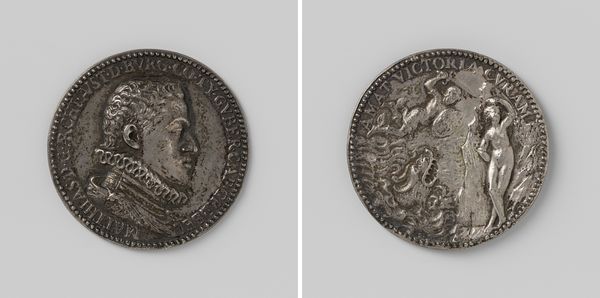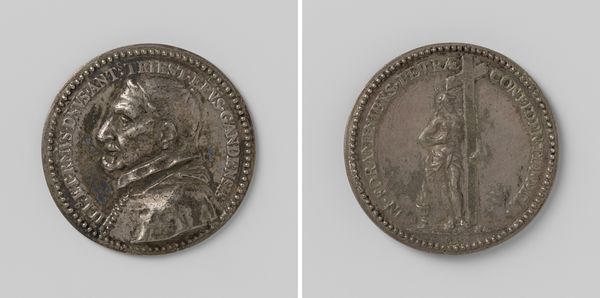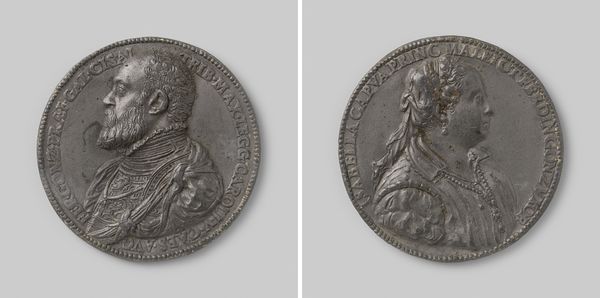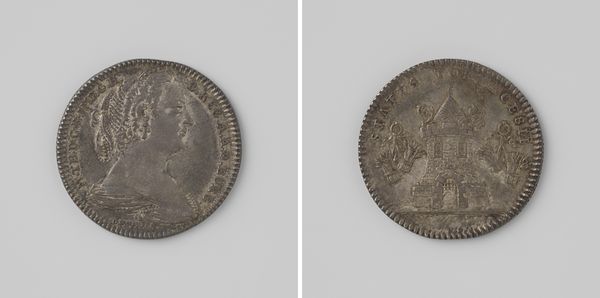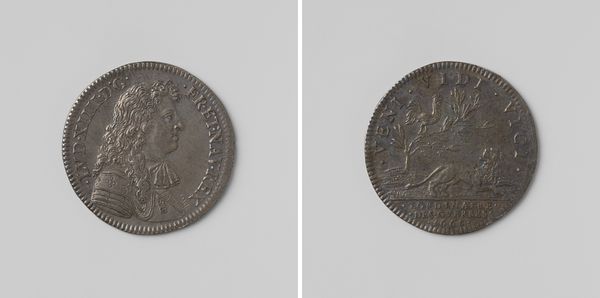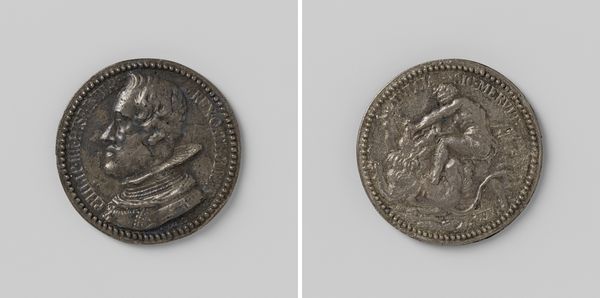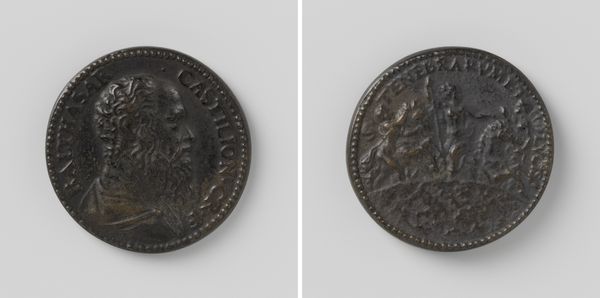
Vernietiging van de Engelse en Nederlandse vloot bij Beachy Head, rekenpenning geslagen ter ere van Lodewijk Alexander, graaf van Toulouse 1690
0:00
0:00
anonymous
Rijksmuseum
print, metal
#
portrait
#
baroque
# print
#
metal
#
history-painting
Dimensions: diameter 2.7 cm, weight 7.44 gr
Copyright: Rijks Museum: Open Domain
Editor: So, this piece is a medal from 1690 titled "Destruction of the English and Dutch fleet near Beachy Head." It’s honoring Louis Alexander, Count of Toulouse. Made of metal, so much detail for such a small object! I see two sides: one shows a portrait and the other a symbolic image with horses. What do you see here? Curator: An interesting selection of symbols indeed. It is crucial to view each image as an encoding, a carrier of complex meaning. The portrait itself isn’t simply a likeness; it embodies power, status, legitimacy. Think of the weight portraits held throughout history – how rulers and important figures used them to project carefully crafted images. Then the horses, seemingly pulling a chariot. But consider: What does that chariot represent? What happens when maritime forces are transposed? Editor: Victory? I mean, horses and chariots seem triumphant, at least historically. Curator: Potentially. It certainly evokes conquest. But why those specific animals pulling it? Horses are signs of royalty and nobility, yet harnessed for this scene that references a naval victory. In this case they may signify naval command and strength. Don’t forget the sea – a chaotic force, traditionally navigated via divine favor or military prowess. See how it's represented – not as an ally, but a stage for dominion? Does the medal celebrate conquest, or caution against it? What feeling remains? Editor: I guess it makes sense that these aren't just pretty images. The combination of portrait and scene gives it more symbolic power than I first assumed. It tells such a potent, persuasive story. Curator: Precisely. These objects served a very specific purpose. And the memory they preserve is as manufactured as the medium itself, yet so telling of its culture.
Comments
No comments
Be the first to comment and join the conversation on the ultimate creative platform.
